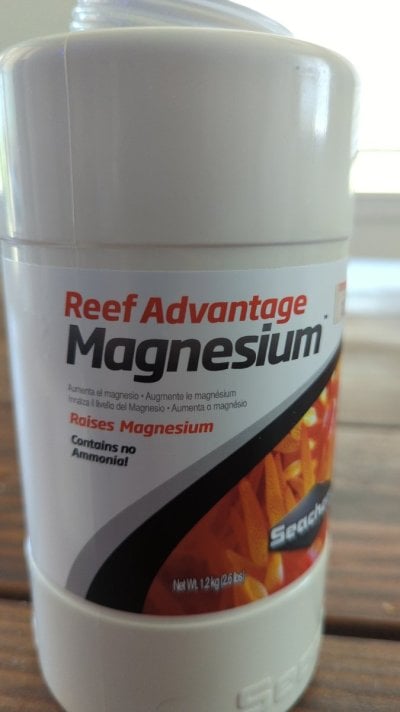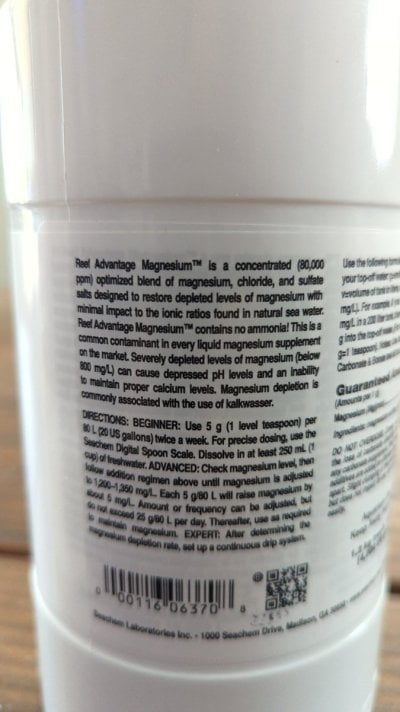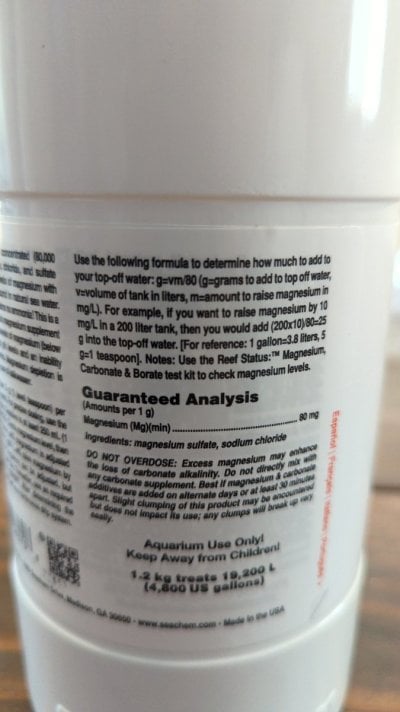Hello all,
Need some help on doing magnesium. My 250 gal total volume tank is low on Mag @ 1120. I bought some Reef Adva tage Magnesium and read the instructions. I also used the Reef Chemistry Calculator below and it shows to add 93oz.
Here are my question if someone can help guide me I'd appreciate it. Can I add the full 93oz to my ATO since it only adds water a few times a day, but I also added Kalkwasser to my ATO...can I put both in the same thing?
If not how much would the concentrate be if I mix that amount 24oz bottle with RO water? and how many ml a day would I need to dose?
It has construction on back for adding to ATO based off of tank vovolume and how many mg/l I want to raise it, but it also mentions not to raise Mag more ththan25g/80 L per day?
So I'm just lost and if O can add to ATO would it be 1 1/4cup added to my ATO?
TThank you for the help!




Need some help on doing magnesium. My 250 gal total volume tank is low on Mag @ 1120. I bought some Reef Adva tage Magnesium and read the instructions. I also used the Reef Chemistry Calculator below and it shows to add 93oz.
Here are my question if someone can help guide me I'd appreciate it. Can I add the full 93oz to my ATO since it only adds water a few times a day, but I also added Kalkwasser to my ATO...can I put both in the same thing?
If not how much would the concentrate be if I mix that amount 24oz bottle with RO water? and how many ml a day would I need to dose?
It has construction on back for adding to ATO based off of tank vovolume and how many mg/l I want to raise it, but it also mentions not to raise Mag more ththan25g/80 L per day?
So I'm just lost and if O can add to ATO would it be 1 1/4cup added to my ATO?
TThank you for the help!























